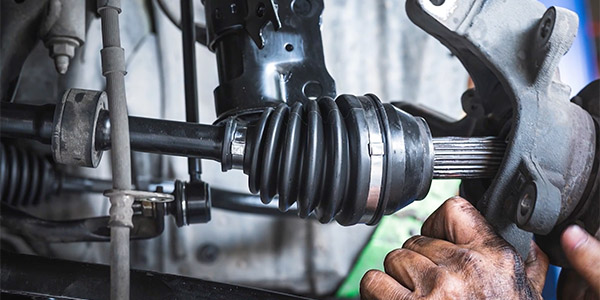CC:
So I’ve got a question for you. Laying out on this bench. Is a scan tool, a scope and a meter? How would you use those tools to diagnose this oxygen sensor? Well, it could be a couple different approaches. It all depends on what you’re comfortable with and what tools you have. But with these tools, you can probably do a very accurate diagnosis of an oxygen sensor. Let’s first talk about the scan tool. The scan tool is great because you are looking at how the data from the auction sensor is processed. So you’re looking at the data or in bolts or even amps on that tool, and it may be a little bit different for different makes, but you’re looking at that data processed through. Typically, the sensor goes to the ECM, it might go to a gateway module, and then it goes to your scan tool.
So some of this data could be a little lagging at times, and you may be looking at something that may occur like that, but you’re only getting a very small picture of what’s going on with the system. Let’s talk about a meter. Yes, you can use a meter if you manage to go to the signal wire, and you can pull up those voltages that are gonna be in milli volts on some sensors, or maybe around two to three volts if it’s a wideband sensor. With this, you’re looking at the average. You may have a meter that says RMS. That means it’s averaging it. But if you go into the MinMax, you’re going to have very important information. You’ll be able to see the voltages produced by the sensor. In other words, you’re gonna have a high voltage, a low voltage, and an average. The average is what your meter is going to display that number.
It can mean a couple different things. That’s why you gotta look at the high and the low. To diagnose the sensor, typically you’re looking of an average on your meter above 450 millivolts. But if due the men max function, it could be anywhere from 80 to 200. Look at the service information for the values required from the sensor. Let’s talk about a scope. A scope is a very versatile tool. In other words, you’re not going through the ECM and the scan tool to get that information. So you can diagnose the vehicle, you’re getting the direct readings from the sensors, you’re looking at what’s going on in that pump cell, and it can give you a lot of great indications of rich and lean conditions that may escape the scan tool. So with this, you’re getting an actual picture of the output of the sensor. In other words, it’s that pump cell where you have the reference air and the exhaust gases, and you’re looking at those voltages. It is the best data you can use to confirm if an oxygen sensor is good, bad, slow, or has other issues. So just keep this in mind if you have a scope, a scan tool or a meter. Each tool has their advantages and disadvantages. So picking the right tool, well, you may have to use the second one to do the full diagnosis. I’m Andrew Markel. Thank you very much.
This video is sponsored by Auto Value and Bumper to Bumper.













